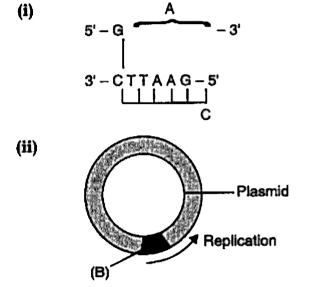Identify A, B, ' in the following:
 Solution in Odia
Solution in Odia
Haloalkanes react with Mg in dry ether to form Grignard reagents (RMgX), which react with water to form hydrocarbons.

Topper's Solved these Questions
- BOOK - ARIHANT PUBLICATIONCHAPTER - HALOALKANES (ALKYL HALIDE) EXERCISE - PART-II- QUESTION FOR PRACTICE (LONG ANSWER TYPE II QUESTIONS)12videos
HALOALKANES (ALKYL HALIDE)
- BOOK - ARIHANT PUBLICATIONCHAPTER - HALOALKANES (ALKYL HALIDE) EXERCISE - PART-II- QUESTIONS FOR ASSESSMENT (MULTIPLE CHOICE TYPE QUESTION)3videos
HALOALKANES (ALKYL HALIDE)
- BOOK - ARIHANT PUBLICATIONCHAPTER - HALOALKANES (ALKYL HALIDE) EXERCISE - PART-II- QUESTION FOR PRACTICE (SHORT ANSWER TYPE I QUESTIONS)19videos
HALOALKANES (ALKYL HALIDE)
- BOOK - ARIHANT PUBLICATIONCHAPTER - GROUP 18 ELEMENTS NOBLEGASES EXERCISE - CHAPTER PRACTICE ( Long Answer Type Questions )6videos
GROUP 18 ELEMENTS NOBLEGASES
- BOOK - ARIHANT PUBLICATIONCHAPTER - PHENOLS EXERCISE - CHAPTER PRACTICE (Long Answer Type Questions )1videos
PHENOLS
Similar Questions
How will you bring about the following conversion?
Ethanol to but-1-yneView SolutionThe leaving group ability of halide ions for SN2 reaction is
01:33View SolutionWhy alkyl halides, though polar, are immiscible with water?
View SolutionDraw the structural formula of the compound XeF4
View Solution(i) Explain with reason:
(a) Presence of electron withdrawing group increases the acidic character of phenol.
(b) Solubility of alcohols in water decreases with increase in molecular mass.
(c) Phenol is more acidic than ethanol.
(ii) How would you obtain
(a) picric acid from phenol?
(b) 2-methyl propanol from 2-methyl propene?02:12View SolutionIdentify A and B from the following
02:10View SolutionIdentify A , B and C in the following
 03:44View Solution
03:44View SolutionIdentify a & b, in the following reaction :
 02:10View Solution
02:10View SolutionIdentify (A), (B) and ( C ) in the followwing:
 05:51View Solution
05:51View SolutionIdentify A and B in the following :
02:29View SolutionIdentify A and B in the following reaction.
 02:11View Solution
02:11View SolutionIdentify A and B in the following reactions.
 02:20View Solution
02:20View SolutionIdentify A, B, in the following :
 01:06View Solution
01:06View SolutionIdentify A & B in the following:
 03:45View Solution
03:45View SolutionIdentify A and B in the following:
 View Solution
View SolutionIdentify (A) and (B) illustrations in the following :
 03:00View Solution
03:00View Solution
